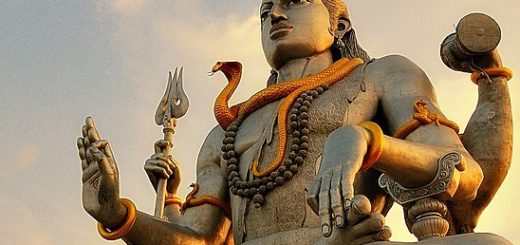Tula Sankranti 2024 Date Pooja Timings Panchangam Tithi
Know the details about Tula Sankranti 2024 Date Pooja Timings Panchangam Tithi, Tula Sankranti 2024 Date Pooja Timings Festival Importance
Tula Sankranti 2024: Celebrating the Sun’s Transition into Libra
- Tula Sankranti Date: Thursday, October 17, 2024
- Punya Kaal Muhurta: 6:28 AM – 11:43 AM
- Maha Punya Kaal Muhurta: 7:19 AM – 8:07 AM
- Who Can Celebrate: Open to all, especially observed in Odisha and Karnataka
- Significance: Marks the Sun’s transition into Libra, symbolizing balance and harmony
Tula Sankranti 2024 Date Pooja Timings Panchangam Tithi
Tula Sankranti, also known as Garbhana or Garja Sankranti, is a significant Hindu festival marking the Sun’s transit into the Libra zodiac sign. Celebrated with fervor in various parts of India, particularly in Odisha and Karnataka, this festival signifies the importance of balance, prosperity, and gratitude. It is a time when devotees engage in rituals that honor nature’s bounty and seek divine blessings for a prosperous future.
Date and Pooja Timings
In 2024, Tula Sankranti will be observed on October 17th. The Punya Kaal, an auspicious period for performing rituals, spans from 6:28 AM to 11:43 AM. The Maha Punya Kaal, considered the most potent time, occurs between 7:19 AM and 8:07 AM. These timings are deemed highly favorable for spiritual activities and charity.
Who Can Celebrate Tula Sankranti?
Tula Sankranti is an inclusive festival that welcomes everyone to participate in its rituals and celebrations. While it holds special significance in Odisha and Karnataka, people across India observe this day with various customs and traditions. It is particularly meaningful for farmers and those connected to agriculture, as it aligns with the post-monsoon harvest season.
The Story Behind Tula Sankranti
The essence of Tula Sankranti lies in the Sun’s transition into the Libra zodiac. Libra, governed by Venus, symbolizes balance, beauty, and harmony. This shift is seen as a call for equilibrium in personal and societal life. The festival is celebrated with rituals that emphasize gratitude for the harvest and prayers for future prosperity.
In Odisha, the day is also known as Garbhana Sankranti, where rituals focus on women’s health and fertility, reflecting the agricultural community’s value on growth and abundance. In Karnataka, the festival is marked by ritualistic holy baths in rivers like the Kaveri, believed to cleanse the soul and invite divine blessings.
Importance of Tula Sankranti
Tula Sankranti is significant not only for its religious and cultural aspects but also for its emphasis on balance and gratitude. The festival encourages individuals to reflect on their lives, seek harmony, and express gratitude for nature’s gifts. It is a reminder of the interconnectedness of life, urging people to maintain balance in their spiritual and worldly pursuits.
Rituals and Celebrations
-
Holy Baths: Devotees take ritualistic dips in sacred rivers, such as the Mahanadi and Kaveri, to cleanse themselves spiritually and physically.
-
Temple Visits and Pujas: Special prayers and offerings are made to deities like Lord Vishnu and Goddess Laxmi. Temples are adorned with flowers, and devotees gather to seek blessings for prosperity and harmony.
-
Charity (Dana-Punya): Acts of charity, including food distribution to the needy, are encouraged. This practice symbolizes gratitude for the harvest and the importance of helping others.
-
Worship of Agricultural Tools: In rural areas, farmers worship their tools and cows as symbols of livelihood and prosperity, expressing appreciation for their role in sustaining life.
-
Regional Celebrations: In Odisha, the day involves preparing special rice cakes (pithas) offered to deities. In Karnataka, the Tula Sankramana festival at Talakaveri, the Kaveri River’s origin, is celebrated with devotion and grandeur.
FAQs
1. What is the significance of Tula Sankranti?
Tula Sankranti marks the Sun’s entry into the Libra zodiac, symbolizing balance and harmony. It is a time for gratitude and reflection on personal and spiritual growth.
2. How is Tula Sankranti celebrated?
The festival is celebrated with holy baths, temple visits, charitable acts, and worship of deities, emphasizing balance, prosperity, and gratitude.
3. Why is the festival especially significant in Odisha and Karnataka?
In Odisha and Karnataka, Tula Sankranti aligns with the agricultural calendar, marking the post-monsoon harvest season. It is celebrated with unique regional rituals and festivities.
4. Can non-Hindus participate in Tula Sankranti?
Yes, Tula Sankranti’s themes of gratitude and harmony are universal, making the festival open to everyone interested in its cultural and spiritual significance.
Tula Sankranti is more than an astronomical event; it is a reflection of life’s cyclical nature and the importance of maintaining balance. As environmental concerns grow, the festival’s connection to agriculture highlights the need for sustainable practices. It serves as a reminder of the delicate balance between humanity and nature, much like the scales of Libra represent.
As we celebrate Tula Sankranti 2024, let us embrace the festival’s teachings to lead lives filled with balance, gratitude, and a deep connection with the world around us.




